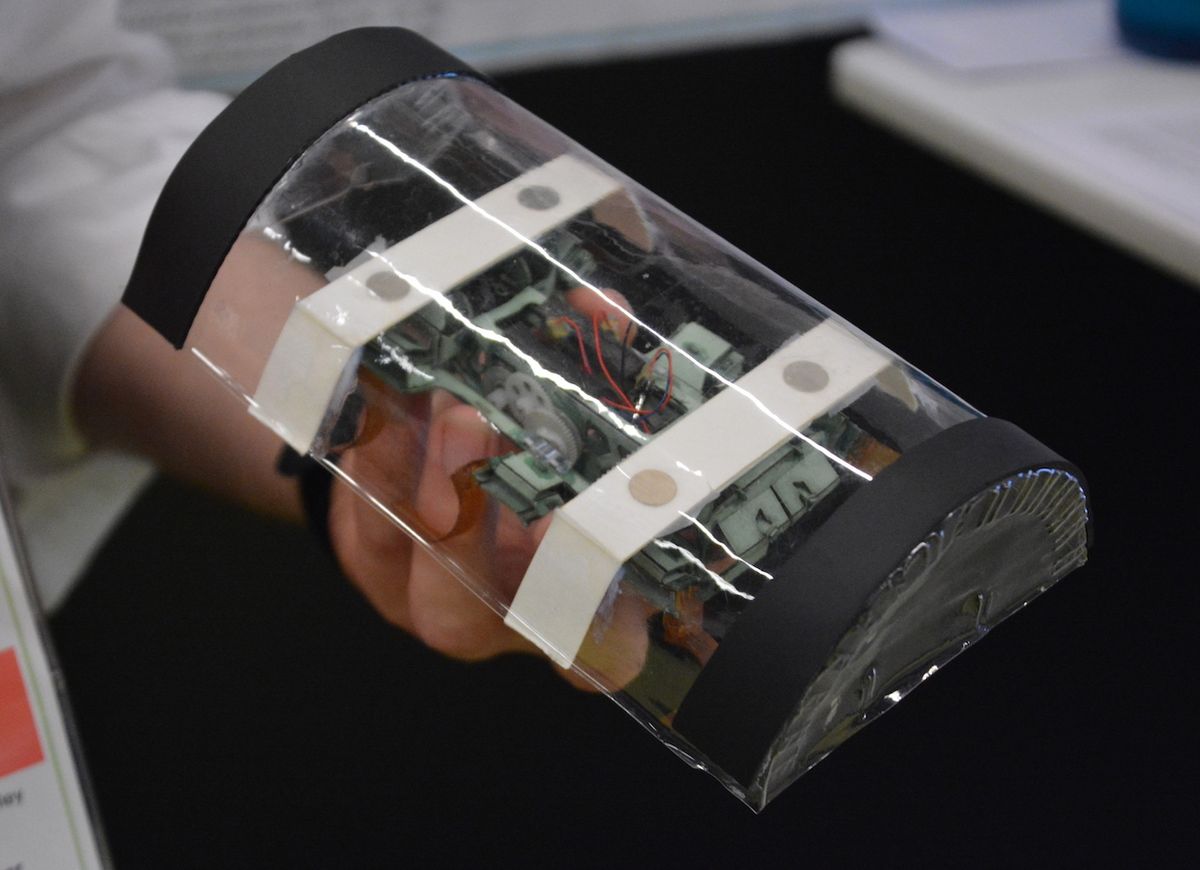UC Berkeley’s VelociRoACH robots are something like a decade old—the first one, DASH, was presented at IROS 2009, back when IROS was small enough to fit into a Hyatt in St. Louis, Mo. The upgraded VelociRoACH showed up next year, and we’re still seeing it being used for innovative new research. The great thing about these little robots is that they’re cheap, easy to build (mostly cardboard), and even easier to modify, so they’ve evolved rapidly over the years with things like wings and winches and drone launchers.
A few years ago, the addition of a shell (which actual roaches have) plus a tail (which actual roaches thankfully do not have) allowed VelociRoACH to flip itself over if it ended up upside down. This worked really well, but it did add a little bit of complication and expense to the VelociRoACH design. Not complication or expense that you’d care about if you were just making one robot, or 10 robots, or even maybe a 100 robots, but the whole point of making super cheap little mobile robots like VelociRoACH is that you want to be able to churn out thousands of them, and then deploy them in ginormous swarms to (say) find people in rubble after an earthquake.
The latest version of VelociRoACH leverages the swarm idea to solve the flipped-over robot problem using nothing more than a slightly-redesigned shell. Instead of using a cockroach-like rounded robot, a square-fronted shell allows one robot to simply smash itself headfirst into another robot until it flips it over.
(Whoa, it’s like we’re listening to “This American Life.” The Ira Glass-style narration is spot-on.)
The design of the shell is a bit more complicated than just chopping the ends off to make it square-ish instead of round-ish. The profile has to be circular rather than elliptical, and the addition of some rubberized strips turns out to be necessary for the robot to flip over at all. It’s also an intentional compromise between size and righting efficiency. With a much larger shell, you could either take advantage of the Weeble effect, or design the shell to work like a Gömböc, helping the robot flip itself through clever geometry. But doing either of those things would impact the ability of the robot to skitter through small spaces.
The overall success rate of this robot-on-robot righting method is 87 percent, but it doesn’t really matter, because there’s no reason not to just keep trying over and over. It also doesn’t really matter whether these robots have sensors on them that can identify other robots and localize them with sufficient accuracy to nudge them in exactly the right way on the first try, because if you know within a few tens of centimeters or so where the upside-down robot is, you can just keep running back and forth through that area until you run into it and flip it over successfully. This is the nice thing about cheap robot swarms—by embracing their lack of sophistication, it’s possible to find ways to make them as effective as robots that are more complicated and expensive.
Looking at the shell as a tool that robots can use to cooperatively manipulate both other robots and their environment has a lot of potential beyond just smash-flipping, according to the researchers:
Beyond its proven capability to temporarily supplement lost DoF, shaping robots for cooperative pushing may enable adding DoF the robots never had. The manipulated robot could be reshaped to have energetically favorable capture regions that allow it to be pitched upwards to scramble into a chimney or over a stair. Alternatively, robots could be hoisted upwards onto that stair by teammates shaped into ramps. A wide vista of design possibility opens up when understanding the robot hull not merely as a container for actuators and processors but as a means for manipulation.
“Team-based Robot Righting via Pushing and Shell Design,” by David L. McPherson and Ronald S. Fearing from UC Berkeley, was presented last month at ICRA 2019 in Montreal, Canada.
Evan Ackerman is a senior editor at IEEE Spectrum. Since 2007, he has written over 6,000 articles on robotics and technology. He has a degree in Martian geology and is excellent at playing bagpipes.



